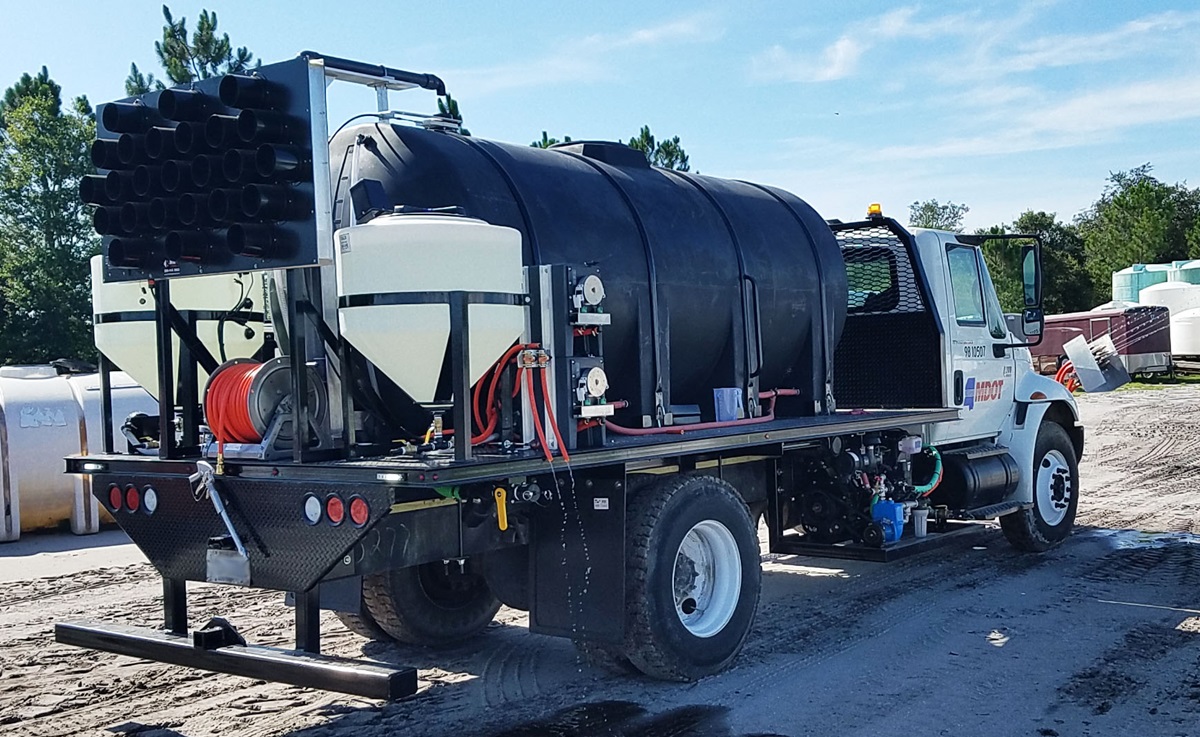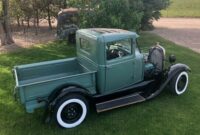Herbicide Spray Trucks For Sale: Your Comprehensive Guide to Efficient Weed Management pickup.truckstrend.com
In the world of agriculture, landscaping, land management, and municipal maintenance, effective weed control is paramount. Unwanted vegetation can choke out crops, degrade aesthetic appeal, compromise infrastructure, and even pose fire hazards. This is where herbicide spray trucks for sale enter the picture, offering a specialized and efficient solution for applying herbicides precisely and economically. More than just a vehicle, these trucks are sophisticated tools designed to optimize chemical application, enhance productivity, and ensure the health and longevity of your land or crops.
Whether you’re a large-scale farmer seeking to maximize yields, a golf course superintendent maintaining pristine greens, a commercial landscaper managing vast properties, or a municipality addressing roadside weeds, understanding the intricacies of herbicide spray trucks is crucial for making an informed investment. This comprehensive guide will delve into every aspect of these essential machines, from their core components and benefits to purchasing considerations, operational tips, and market insights.
Herbicide Spray Trucks For Sale: Your Comprehensive Guide to Efficient Weed Management
Understanding Herbicide Spray Trucks: Components and Functionality
A herbicide spray truck is a specialized vehicle, often built upon a robust truck chassis, equipped with a system designed for the precise application of liquid chemicals. While configurations vary widely, the core components generally include:
- Chassis: This is the foundation, typically a heavy-duty pickup truck, flatbed truck, or a dedicated commercial truck, chosen for its payload capacity, durability, and terrain capabilities (e.g., 4×4 for off-road use).
- Spray Tank: Ranging from a few dozen to thousands of gallons, tanks are commonly made of durable, chemical-resistant materials like polyethylene or fiberglass. Key features include baffles to prevent sloshing, sumps for complete drainage, and sometimes agitation systems (mechanical or hydraulic) to keep chemicals mixed.
- Pump: The heart of the spray system, the pump pressurizes the liquid for application. Common types include diaphragm, centrifugal, roller, and piston pumps, each suited for different pressures, flow rates, and chemical compatibilities.
- Booms and Nozzles: Booms are extendable arms, often foldable, that hold multiple nozzles to achieve wide coverage. Nozzles, the actual spray outlets, come in various types (e.g., flat fan, full cone, flood) to deliver specific spray patterns and droplet sizes, crucial for effective coverage and drift control. Boomless nozzles are also available for specific applications or irregular terrains.
- Control System: This can range from simple manual valves to sophisticated electronic rate controllers integrated with GPS. Advanced systems offer automatic section control (turning off sections of the boom when overlapping), auto-steer, and variable rate application, minimizing waste and maximizing precision.
- Hoses and Fittings: Chemical-resistant hoses and robust fittings ensure leak-free operation and durability under pressure.
- Rinse Tanks and Induction Systems: Many trucks include dedicated clean water tanks for rinsing the system in the field, and some have induction systems for safely mixing chemicals.

Together, these components create a highly functional unit capable of delivering targeted herbicide treatments efficiently and effectively.
Key Benefits of Investing in a Herbicide Spray Truck

Acquiring a dedicated herbicide spray truck offers a multitude of advantages for operations of all sizes:
- Unparalleled Efficiency and Speed: Cover vast areas quickly, significantly reducing labor time compared to manual application methods. This translates directly into higher productivity and lower operational costs.
- Precision Application: Modern spray trucks, especially those with GPS and section control, allow for highly accurate application, targeting weeds precisely while minimizing overspray onto desirable plants or sensitive areas. This reduces chemical consumption and environmental impact.
- Cost Savings: Beyond reduced labor, precise application means less chemical waste. Optimized chemical use leads to significant savings on herbicide purchases over time.
- Versatility: Many spray trucks can be adapted for various liquid applications, including fertilizers, fungicides, insecticides, or even de-icing solutions, expanding their utility beyond just herbicides.
- Enhanced Control and Customization: Operators have full control over spray pressure, flow rate, and nozzle selection, allowing them to tailor applications to specific weed types, crop stages, and environmental conditions.
- Improved Results and Yields: Timely and effective weed control leads to healthier crops, better yields, and more aesthetically pleasing landscapes.

Types of Herbicide Spray Trucks Available
The market for herbicide spray trucks offers a diverse range of options, catering to different scales of operation and budgets:
- Skid-Mounted Sprayers: These are self-contained spray systems designed to be loaded onto the bed of an existing pickup truck, UTV, or trailer. They are highly versatile, allowing a single vehicle to serve multiple purposes. Skid units are popular for smaller to medium-sized operations, spot spraying, or areas with difficult access.
- Truck-Mounted Sprayers: These units are permanently or semi-permanently installed onto a dedicated truck chassis. They offer larger tank capacities and wider booms than skid units, making them ideal for commercial landscapers, municipalities, and medium to large farms. They provide a robust and integrated solution.
- Self-Propelled Sprayers: While often considered distinct from "trucks," these are highly specialized, purpose-built machines with high ground clearance, massive tank capacities (1,000+ gallons), and extremely wide booms (up to 120 feet or more). They are the ultimate in efficiency and precision for large-scale agricultural operations. While not always classified purely as "trucks," they represent the high-end of mobile spraying solutions.
- New vs. Used Equipment:
- New Trucks: Offer the latest technology, warranties, and customization options. They come with a higher upfront cost but often boast superior efficiency and reliability.
- Used Trucks: Can be a cost-effective entry point, especially for smaller businesses or those with limited budgets. Thorough inspection and understanding the maintenance history are critical when buying used.
Crucial Considerations When Buying a Herbicide Spray Truck
Purchasing a herbicide spray truck is a significant investment that requires careful evaluation of your specific needs and priorities.
- Application Needs:
- Area Size & Frequency: How many acres or linear miles will you be spraying, and how often? This dictates tank capacity, boom width, and overall robustness.
- Terrain: Flat fields, rolling hills, or uneven urban landscapes? This influences the need for 4WD, boom stability, and ground clearance.
- Target Weeds/Crops: Different chemicals and application strategies might require specific nozzle types or pressure ranges.
- Budget: Establish a realistic budget that includes not just the purchase price but also potential financing costs, insurance, maintenance, and operational expenses (fuel, chemicals).
- Tank Capacity: Choose a tank size that allows you to cover a substantial area before needing to refill, minimizing downtime. However, don’t over-spec, as a larger tank means more weight and potentially higher fuel consumption.
- Pump Performance: Match the pump’s flow rate (GPM) and pressure (PSI) to your desired application volume and nozzle requirements.
- Boom Type and Width: Consider the width of the areas you typically spray. Wider booms increase efficiency but require more space for transport and maneuvering. Boomless nozzles offer flexibility for irregular areas.
- Control Systems: Decide between manual controls, basic electric controls, or advanced GPS-enabled systems with section control and variable rate capabilities. While more expensive, advanced systems offer significant long-term savings in chemical costs and increased accuracy.
- Truck Chassis Condition (for used trucks): If buying a truck-mounted unit, thoroughly inspect the truck’s engine, transmission, tires, brakes, and frame for rust or damage. Ensure the chassis’s Gross Vehicle Weight Rating (GVWR) can safely handle the full weight of the sprayer and chemicals.
- Maintenance and Parts Availability: Research the reputation of the manufacturer and dealer. Easy access to parts and reliable service are crucial for minimizing downtime.
- Regulatory Compliance: Be aware of local, state, and federal regulations regarding chemical application, operator licensing, and equipment requirements. Some precision technologies can help meet stricter environmental guidelines.
- Safety Features: Prioritize trucks with essential safety features like emergency shut-offs, proper lighting, safety railings, and well-designed chemical induction systems.
Tips for Successful Herbicide Spray Truck Ownership and Operation
Once you’ve acquired your herbicide spray truck, proper operation and maintenance are key to maximizing your investment:
- Regular Maintenance: Implement a strict maintenance schedule. This includes pre-season checks (hoses, nozzles, pump, filters), in-season daily checks (leaks, pressure), and post-season winterization (draining, flushing, antifreeze).
- Calibration is King: Accurately calibrate your sprayer before each spraying season, and periodically throughout. Calibration ensures you apply the correct amount of chemical, preventing under-application (ineffective) or over-application (wasteful and potentially harmful).
- Nozzle Selection: Choose the right nozzle type and size for the specific herbicide, target, and weather conditions. Droplet size matters for efficacy and drift reduction.
- Chemical Handling and Storage: Always follow chemical label instructions for mixing, application rates, personal protective equipment (PPE), and safe storage. Proper disposal of rinsate is also critical.
- Operator Training: Ensure all operators are thoroughly trained on the truck’s operation, calibration, safety protocols, and chemical handling.
- Environmental Awareness: Monitor wind speed and direction, temperature, and humidity. Avoid spraying near water bodies, sensitive crops, or populated areas when conditions are unfavorable to minimize drift.
- Record Keeping: Maintain detailed records of every spray application, including date, time, chemical used, rate, field/area, weather conditions, and any observations. This is crucial for compliance, troubleshooting, and future planning.
Challenges and Solutions in Herbicide Spray Truck Acquisition and Use
- Challenge: High Initial Cost.
- Solution: Explore financing options, consider purchasing a well-maintained used truck, or start with a more affordable skid-mounted unit before upgrading.
- Challenge: Complexity of Operation and Calibration.
- Solution: Invest in comprehensive operator training. Modern systems with user-friendly interfaces and automated features can simplify operation.
- Challenge: Maintenance and Downtime.
- Solution: Adhere to a rigorous preventative maintenance schedule. Build relationships with reliable parts suppliers and service technicians. Keep common wear parts on hand.
- Challenge: Environmental Regulations and Public Perception.
- Solution: Stay informed about evolving regulations. Invest in precision application technologies (GPS, section control) that demonstrate responsible chemical use and minimize environmental impact. Educate stakeholders about your practices.
- Challenge: Finding the "Right" Truck.
- Solution: Conduct a thorough needs assessment. Consult with experienced operators or agricultural equipment specialists. Don’t rush the decision; research thoroughly and inspect potential purchases diligently.
Price Table: Estimated Costs for Herbicide Spray Trucks
The price of herbicide spray trucks varies significantly based on type, age, condition, capacity, features, and brand. The table below provides general estimated price ranges (USD) as of late 2023/early 2024. These are approximate and can fluctuate widely based on market conditions, location, and specific configurations.
| Type/Category | Tank Capacity (Gallons) | Boom Width / Application | Key Features | Estimated Price Range (USD) |
|---|---|---|---|---|
| Used Skid-Mounted Unit | 50 – 200 | Spot / Small Broadcast | Basic pump, manual controls, hose reel. May require truck purchase separately. | $1,500 – $8,000 |
| New Skid-Mounted Unit | 100 – 300 | Broadcast / Spot | Electric/gas pump, basic electric controls, durable tank, hose reel. | $5,000 – $18,000 |
| Used Truck-Mounted Unit | 200 – 800 | 20 – 60 ft Broadcast | Older diesel chassis, manual/basic electric controls, some wear. | $15,000 – $60,000 |
| New Truck-Mounted Unit | 500 – 1500 | 60 – 100 ft Broadcast | New truck chassis, advanced pump, electric controls, optional GPS/section control. | $70,000 – $250,000+ |
| Advanced Self-Propelled Sprayer | 1000 – 2000+ | 90 – 130 ft Broadcast | High-clearance, dedicated chassis, precision GPS, auto-steer, boom leveling. | $200,000 – $600,000+ |
Disclaimer: Prices are highly variable and depend on factors such as brand, model year, condition, hours of use, included technology, and dealer location. Always obtain detailed quotes and inspect equipment thoroughly.
Frequently Asked Questions (FAQ) About Herbicide Spray Trucks
Q1: What’s the main difference between a skid sprayer and a truck-mounted sprayer?
A1: A skid sprayer is a self-contained unit that can be temporarily placed on various vehicles (pickup, UTV, trailer). A truck-mounted sprayer is more permanently installed on a dedicated truck chassis, typically offering larger capacities and wider booms, designed for heavier use.
Q2: How often should I calibrate my spray truck?
A2: It’s recommended to calibrate your sprayer at the beginning of each spraying season, anytime you change nozzles or chemicals, and ideally after every 50-100 hours of operation, or if you notice inconsistencies in application. Regular calibration is crucial for effective and economical spraying.
Q3: What are the most important safety features to look for in a spray truck?
A3: Key safety features include accessible emergency shut-off valves, proper guarding around moving parts (e.g., pumps), non-slip surfaces, good lighting for night operation, a clear view from the operator’s seat, and a dedicated clean water tank for rinsing and eye washing.
Q4: Can I convert a regular pickup truck into a spray truck?
A4: Yes, a regular pickup truck can be converted by adding a skid-mounted spray unit to its bed. However, ensure the truck’s payload capacity is sufficient to safely carry the full weight of the sprayer, tank, and chemicals. For larger, more permanent setups, a flatbed or commercial chassis is often preferred.
Q5: What kind of maintenance does a spray truck require?
A5: Regular maintenance includes checking and cleaning nozzles, filters, and strainers; inspecting hoses and fittings for leaks; lubricating moving parts; checking pump oil levels; flushing the system with clean water after use; and thorough winterization (draining and adding antifreeze) in cold climates.
Q6: How does GPS guidance improve spraying accuracy?
A6: GPS guidance allows for precise navigation, minimizing skips and overlaps. Coupled with section control, it automatically turns off boom sections when passing over previously sprayed areas or field boundaries, significantly reducing chemical waste and environmental impact, especially in irregularly shaped fields.
Conclusion
Investing in a herbicide spray truck is a strategic decision that can dramatically enhance the efficiency, precision, and profitability of your weed management operations. By carefully considering your specific needs, understanding the various types and features available, and committing to proper operation and maintenance, you can select a machine that serves as a powerful asset for years to come. The market for herbicide spray trucks for sale offers a solution for every scale and budget, promising a future of more effective, economical, and environmentally responsible land management.


